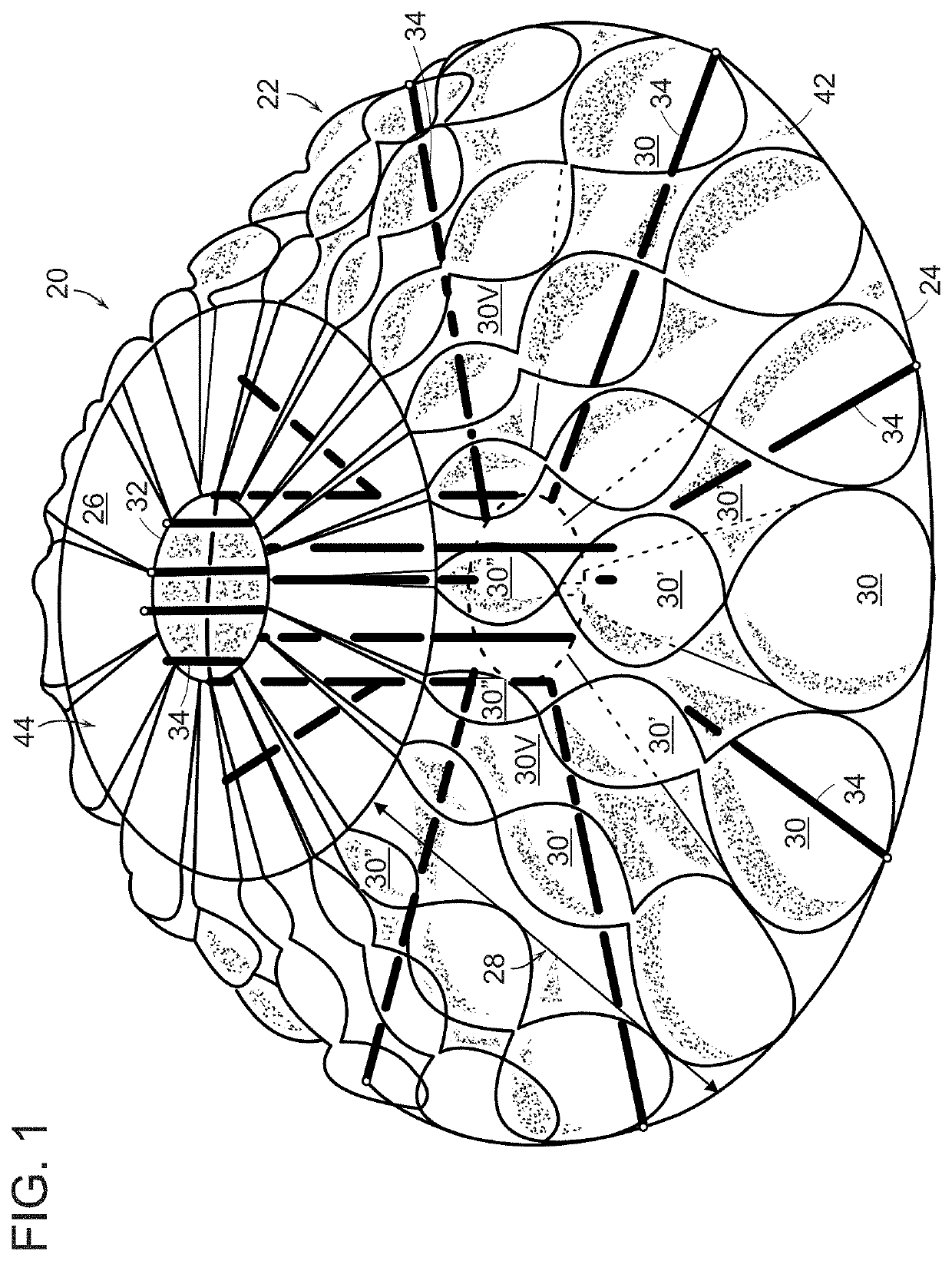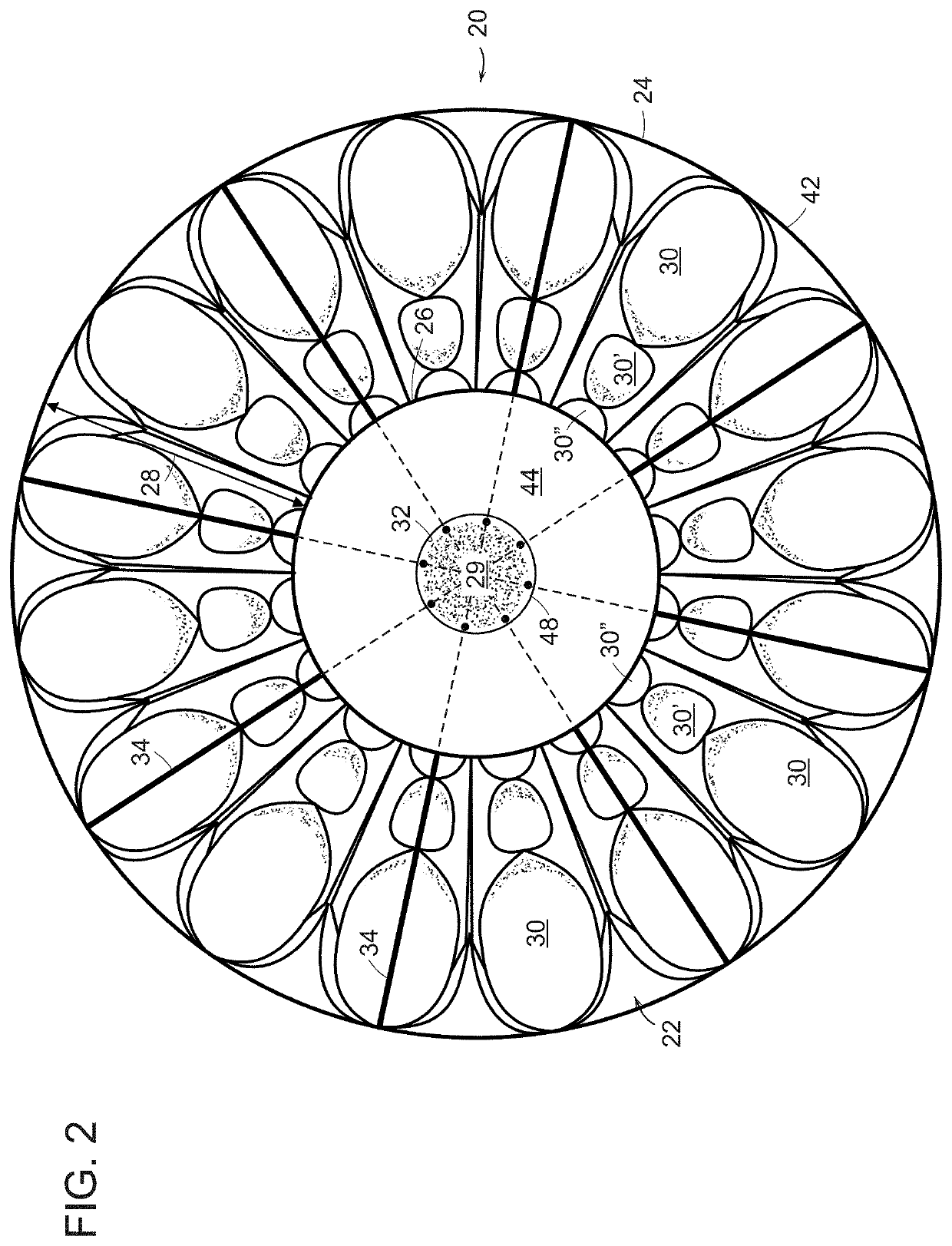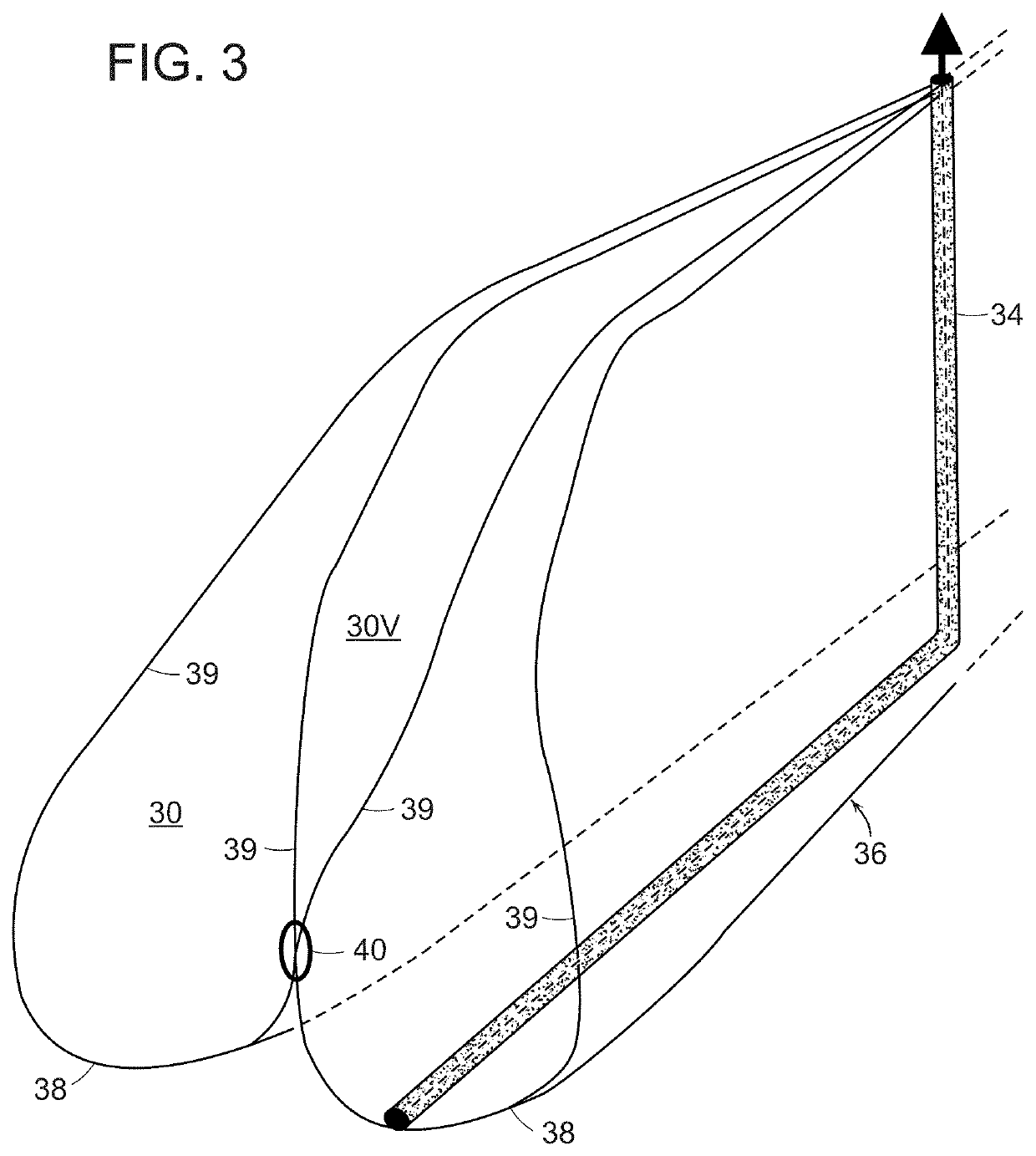In vivo tissue engineering devices, methods and regenerative and cellular medicine employing scaffolds made of absorbable material
a tissue engineering and absorbable material technology, applied in the field of tissue engineering devices and methods employing absorbable material scaffolds, can solve the problems of insufficient stents, insufficient stents, and tissue necrosis and capsular contracture, and achieve good neovascularization, prevent pooling of fat, and promote vascularization.
- Summary
- Abstract
- Description
- Claims
- Application Information
AI Technical Summary
Benefits of technology
Problems solved by technology
Method used
Image
Examples
Embodiment Construction
[0035]An in vivo tissue engineering device 20 according to the present invention is shown in FIGS. 1 and 2 and includes a scaffold 22 made of one or more sheets of mesh absorbable material which is, by nature, porous. The scaffold has a wide base or proximal portion 24, a narrower apex or distal portion 26 and a tapering, sidewall 28 extending between the base portion and the apex portion. The sidewall 28 is formed by a plurality of partially open, tissue engineering chambers 30 such that the sidewall has a rugose configuration formed by pleats or folds of the one or more sheets of absorbable material. The scaffold has a hollow inner region 29 which can be formed by a central core 32 extending between the base portion and the apex portion. If required by size, volume and stability, a plurality of L-shaped tubular struts 34 made of absorbable material can be radially arranged on the scaffold with legs extending through the core and bent 90° to terminate adjacent the perimeter of the ...
PUM
| Property | Measurement | Unit |
|---|---|---|
| Diameter | aaaaa | aaaaa |
| Size | aaaaa | aaaaa |
| Shape | aaaaa | aaaaa |
Abstract
Description
Claims
Application Information
 Login to View More
Login to View More - R&D
- Intellectual Property
- Life Sciences
- Materials
- Tech Scout
- Unparalleled Data Quality
- Higher Quality Content
- 60% Fewer Hallucinations
Browse by: Latest US Patents, China's latest patents, Technical Efficacy Thesaurus, Application Domain, Technology Topic, Popular Technical Reports.
© 2025 PatSnap. All rights reserved.Legal|Privacy policy|Modern Slavery Act Transparency Statement|Sitemap|About US| Contact US: help@patsnap.com



